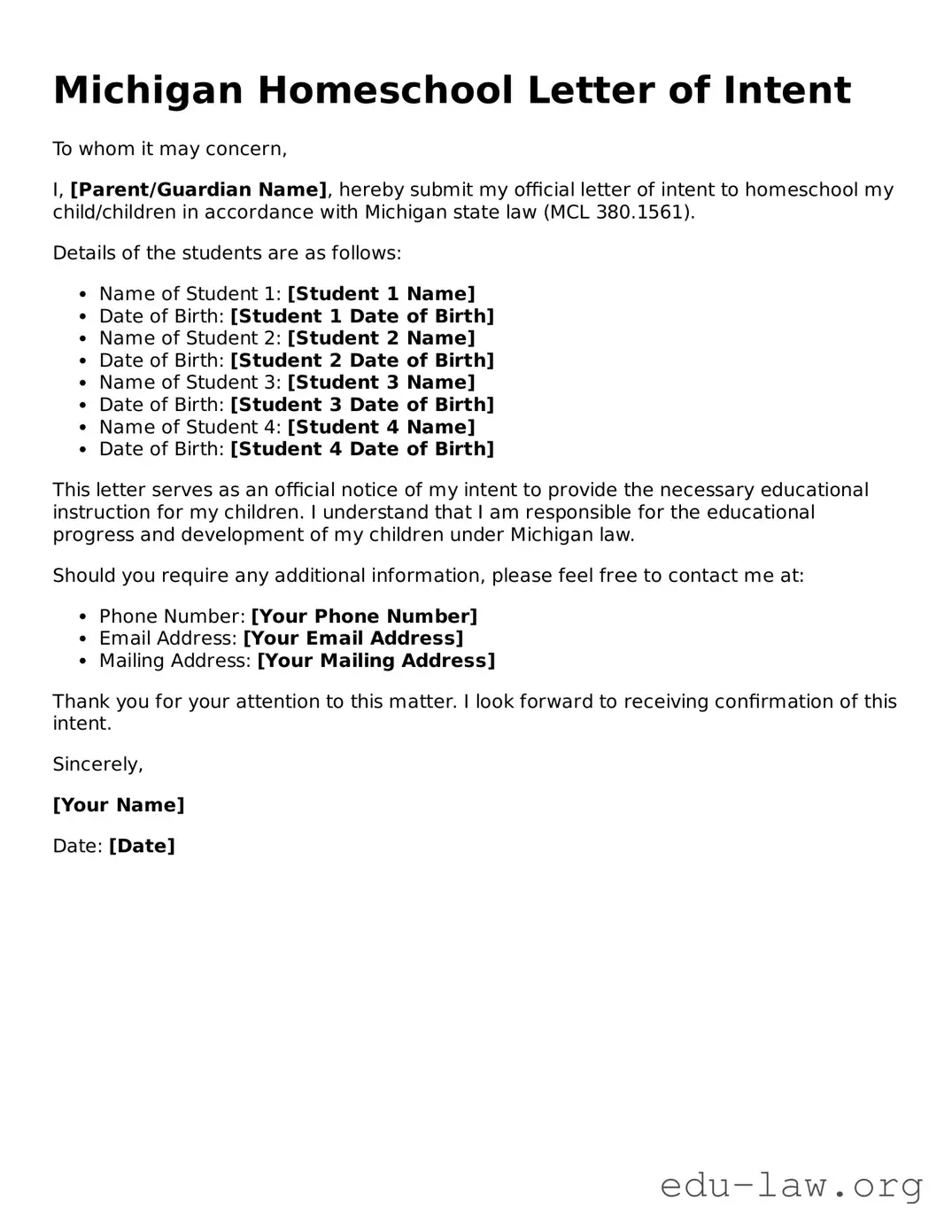Michigan Homeschool Letter of Intent
To whom it may concern,
I, [Parent/Guardian Name], hereby submit my official letter of intent to homeschool my child/children in accordance with Michigan state law (MCL 380.1561).
Details of the students are as follows:
- Name of Student 1: [Student 1 Name]
- Date of Birth: [Student 1 Date of Birth]
- Name of Student 2: [Student 2 Name]
- Date of Birth: [Student 2 Date of Birth]
- Name of Student 3: [Student 3 Name]
- Date of Birth: [Student 3 Date of Birth]
- Name of Student 4: [Student 4 Name]
- Date of Birth: [Student 4 Date of Birth]
This letter serves as an official notice of my intent to provide the necessary educational instruction for my children. I understand that I am responsible for the educational progress and development of my children under Michigan law.
Should you require any additional information, please feel free to contact me at:
- Phone Number: [Your Phone Number]
- Email Address: [Your Email Address]
- Mailing Address: [Your Mailing Address]
Thank you for your attention to this matter. I look forward to receiving confirmation of this intent.
Sincerely,
[Your Name]
Date: [Date]
